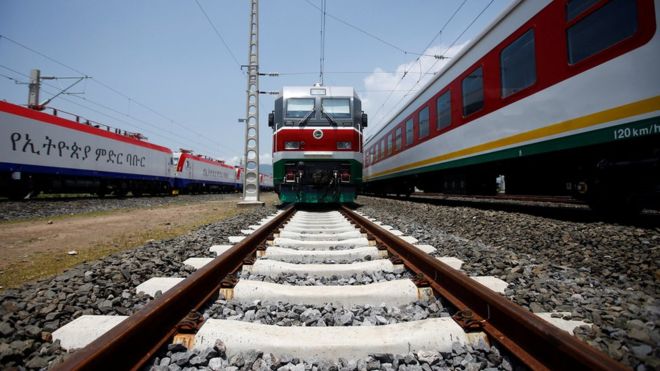This article was originally published in the 4th issue (October 2016) of The Ethiopian Messenger, the quarterly magazine of the Embassy of Ethiopia in Brussels.
After three years of uninterrupted construction works, the Addis Ababa- Djibouti railway officially started operations. It is one of the eight new railway projects planned to be constructed in the country. As a very cost- effective means of transport over long distances, the Ethiopian railway infrastructure development projects are expected to significantly stimulate the national economy and accelerate regional integration.
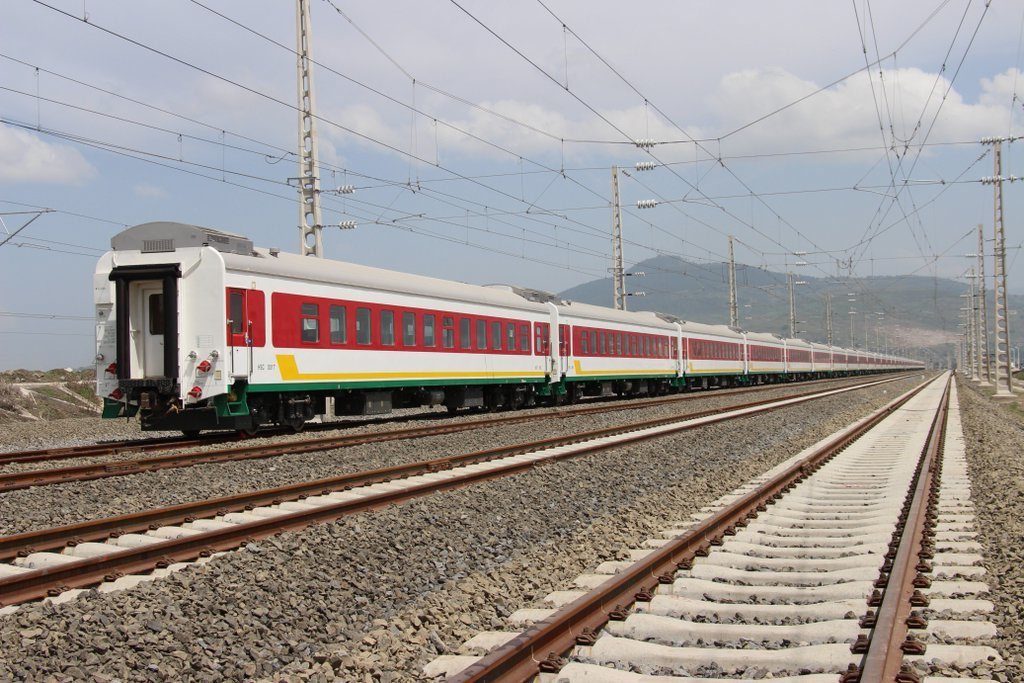
« By all standards, the Ethio-Djibouti project will change the way things work for any investor, particularly one who wants to get involved in manufacturing. The transportation cost will be low and it will be very reliable” Transport Minister Workineh Gebeyehu said at the 8th Ethio-Djibouti Railway Project Joint Commission meeting. « It is difficult to think of rapid economic development, industrialization and international competitiveness without efficient, high quality and modern transport infrastructure ».
Ambitious railway policy to support national growth
Thanks to the implementation of three national development plans (The Agricultural Development Led Industrialization then the Growth and Transformation Plans I & II), Ethiopia is increasingly being recognized as an attractive country for local and foreign investors. Between 2008 and 2015, the country has witnessed a more than tenfold increase of foreign direct investments, which grew from USD 100 million to USD 1.5 billion. Sectors such as light industry and agro-processing, that were practically inexistent two decades ago, are now in the focus thanks to cheap and trainable labor force, affordable electricity and huge availability of raw agriculture goods. This attractiveness is set to further increase in the next years. According to consultancy firm Ernst & Young, the country will rank among Africa’s top four manufacturing hubs by 2025.
To achieve the status of regional manufacture and agricultural hub, Ethiopia needs to take advantage of its unique location, close to the Middle East, Europe and Asia. Though the world-class national airline Ethiopian Airlines already provides great transportation of fast consumption goods like horticulture and floriculture, the country still has to develop its transport capacity for non-perishable goods. This need is particularly acute because the country is landlocked. Road infrastructure has been developing fast in Ethiopia during the past years, but it cannot cover by itself the even faster-growing needs of the economy on the very large territory of Ethiopia (1,1 million km2). “We are a niche market in a good geographical position,” said CEO of the Ethiopian Railways Corporation (ERC) Dr Getachew Betru in an interview with The Worldfolio. “This is why the railway mode of transport is called a game changer.”
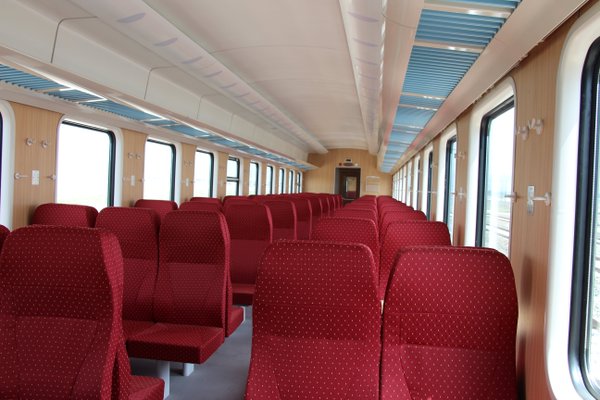
In 2007, Ethiopia’s Council of Ministers established the Ethiopian Railway Corporation (ERC), with a mandate to develop an integrated and high-capacity railway providing competitive and affordable passenger and freight transport services. The aim for the National Railway Network of Ethiopia is to build eight new railway lines for freight and passengers covering a total distance of 5,000 kilometers working across the country by 2020, in addition to an innovative 32-km light railway in the capital. Five of these eight projects are already in early or advanced stages of construction, while the Addis Ababa light railway already started operations in 2015.
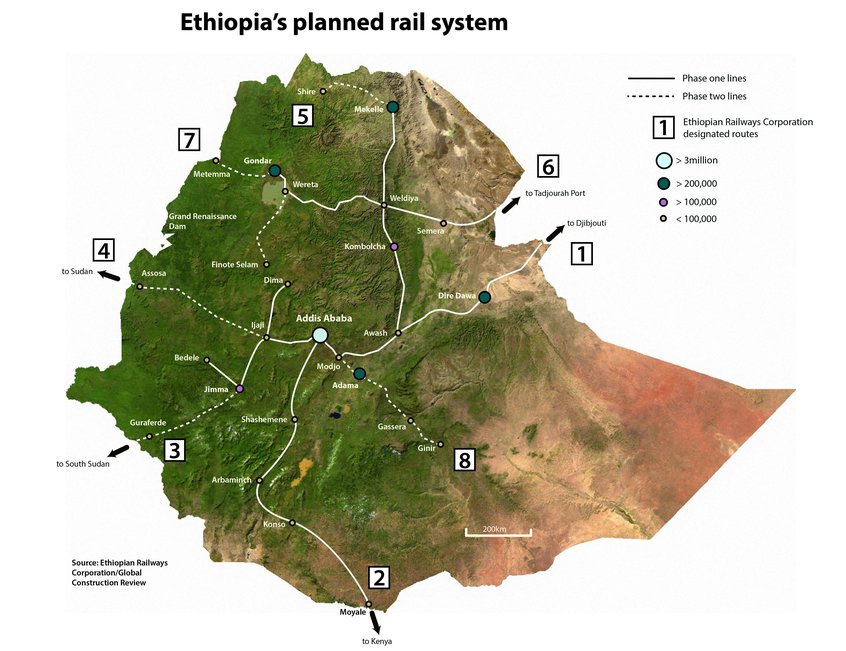
Major Projects
LIGHT RAILWAY ADDIS ABABA
The light railway of Ethiopia is the first urban metro light rail scheme to be built in sub-Sahara, South Africa excluded. Since September 2015, up to 60,000 passengers can travel each hour on the two lines, across 39 stations and 32 kilometers. Thanks to subsidies from the government, the tickets are very cheap, allowing all the city inhabitants to use the innovative tramway. This new transportation system plays an effective part in solving the problems affecting Addis Ababa transport: an aged fleet, the chaotic and dangerous movement of mini-bus taxis and environmentally unacceptable levels of CO2 emissions. Eighty-five percent of the USD 475 million cost of the Addis Ababa Rail Transit project were covered by the Chinese Exim Bank, an agreement which came with significant technology transfer to train Ethiopian engineers and maintenance personal.
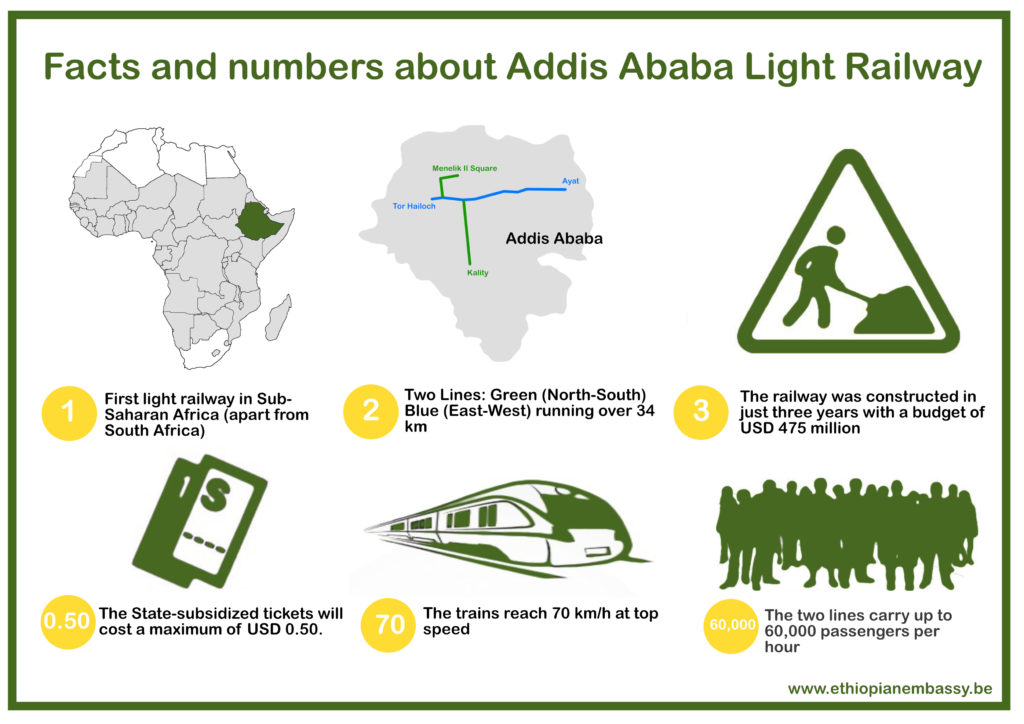
ADDIS ABABA-DJIBOUTI
Built by the French in the 1890s, the initial Addis Ababa-Djibouti railway line deteriorated over the decades due to lack of maintenance, cutting Ethiopia’s direct railway access to the port of Djibouti. The construction works of the new line, which runs parallel to the old one-meter gauge railway, started anew in 2012, with a total construction budget of USD 4.5 billion, financed by the Ethiopian government and in loans from the Exim Bank of China. The 320 kilometers stretch from Addis Ababa to Mieso was built by the China Railway Group, while the 339 kilometers section from Mieso to the Djibouti border was built by the China Civil Engineering Construction Corporation. Italferr, the engineering subsidiary of Italian State Railways, provides consultancy services for maintenance and operations. The first freight on the line was carried on 20 November 2015 along the partially completed line to Merebe Mermersa and the line was inaugurated on 5 October 2016.
According to Transportation minister Workineh Gebeyehu, the Addis Ababa-Djibouti railway line will allow Ethiopia to compete efficiently on the international market. In fact, it will provide a fast, efficient and cheap freight and passenger transportation from the capital city to the port of Djibouti, where most of Ethiopia’s export and import items transit. With this new line, the travel distance is cut from several days to less than 10 hours, with passenger trains transiting as fast as 160 km/h and freight trains at 120 km/h. The line is East Africa’s most important standard gauge railway and will carry 750,000 passengers and 8.5 million tons of freight annually. It will create more than five thousand job opportunities.
On the other hand, the completion of the Addis Ababa- Djibouti railway will certainly expedite the economic integration efforts of the Eastern Africa region. It is to be recalled that Ethiopia is linked by standard road with Djibouti, Kenya, Sudan, South Sudan and Somalia. Electricity is also exported to Djibouti and Sudan.
MEKELE-WELDIYA
The construction of the 268 kilometers Mekele-Weldiya line began in February 2015. It is funded by a loan from Exim Bank ($1,5 billion) and several other lenders ($1.7 billion). CCCC (China) and Yapı Merkezi (Turkey) are managing the project.
WELDIYA-AWASH
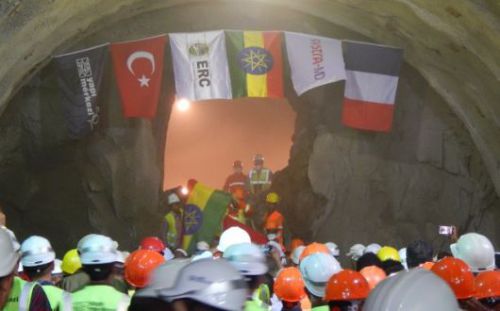
Connected to the Weldiya-Mekele line, the Awash-Weldiya line will ultimately connect Mekele to the Addis Ababa- Djibouti line. The 375 km project line is constructed by a consortium led by Yapi Merkezi (Turkey). The financing package comprises a USD 450 million seven-year loan from a consortium of lenders from Europe, Africa, the Middle East, and North America, and a USD 415 million 13-year loan backed by Sweden’s EKN and EKF and Swiss Export Risk Insurance. The terrain is particularly challenging for railway construction as Awash, at the southern end of the line, is 986 meters above sea level, and the line then climbs to Kombolcha at 1842 meters and finally reaches Hara Gebeya, close to Weldiya, at 2122 meters above sea level. This railway section achieved a major milestone in August 2016 with the holing through of a 1530 meters tunnel after one year of work. Three of the six tunnels on the line are now holed through.
WELDIYA-TADJOURA
This 280 kilometers project will give access to the port of Tadjoura in Djibouti, connecting the Ethiopian hinterland to another port facility in addition to the Djibouti port. It could be particularly useful to exploit the potash deposit in this region of Ethiopia.
ADDIS ABABA-BEDELE
The 439 kilometers line will connect Addis Ababa with Jimma, Bedele and in the future with South Sudan. Andrade Gutierrez Participacoes (Brazil) is in charge of the construction which started after prime minister Mr Hailemariam Desalegn laid the foundation stone for the project in May 2015. “The railway line which will ultimately connect to their neighbor Sudan, will play a major role in enhancing social, political and economic activities of the areas it crosses as well as the nation” according to Ethiopian Railways Corporation CEO Getachew Betru.
Long-term development and regional integration
Beyond the construction of the different railway lines throughout the country, Ethiopia is investing in long-term capacity-building to continue planning, maintaining and building its railway network. In April 2015, Ethiopia put forward the plan to establish the Railway Academy of Ethiopia for skilled railroad professionals, where railway professionals would be trained as managers, engineers, technicians, and researchers. The goal is to develop the competencies at national level to be able to manage the whole rail network with Ethiopian engineers and staff by 2020. “Hopefully, by the end of 2020 all the railways will be made in Ethiopia by Ethiopians,” Betru said. “My generation is trying, but it is the next generation, the youth, that will transform Africa, and we will see the real impact on education, health and economy in the 2020s.”
In 2015, the country also drafted its first National Logistics Strategy, which is expected to improve Ethiopia’s maritime, air and road connectivity, which in turn will greatly enhance multi and unimodal logistics operating systems, Ethio- Djibouti Corridor Management, customs, maritime and transit administration structures.
Railway development in Ethiopia is first and foremost focused on economic development, but it will also have a positive impact on the building of a climate-resilient economy and regional integration. As a very cost-effective means of transport over long distances, the Ethiopian railway infrastructure development projects are expected to significantly reduce transport costs, increase the safety and reliability of transport services, facilitate the import-export trade of the country, increase the inflow foreign direct investment, strengthen socio-cultural cohesion, technical knowledge in the country and stimulate trade and peace in the whole region.
